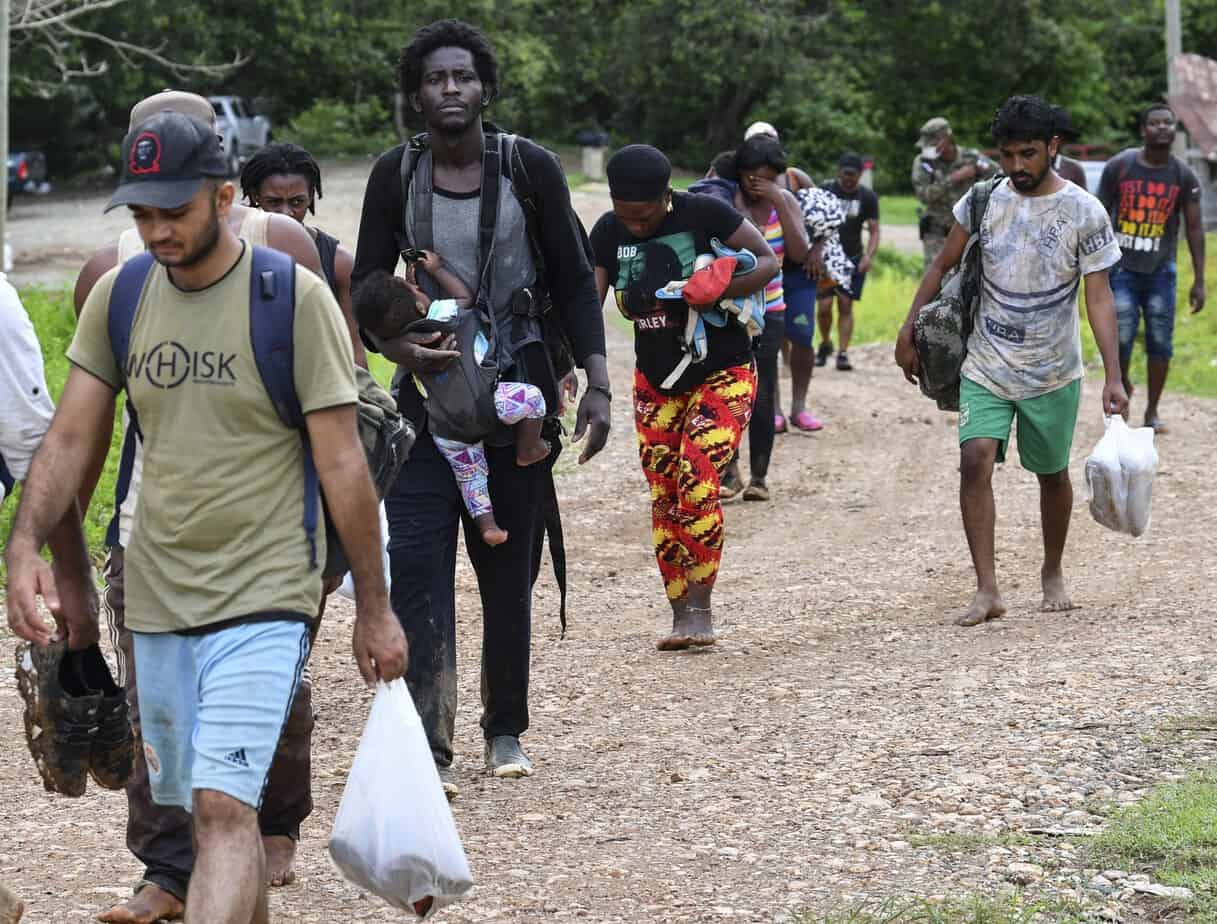Some have died on the way, pregnant women lost their babies and one Haitian was shot in the arm, yet migrants still trek on foot through Panama’s perilous Darien forest in the hope of one day reaching the United States.
To reach Panama from Colombia, the migrants — mostly from Haiti and Cuba, but also Africa and Asia — brave the nightmare journey across the 575,000 hectares of jungle where snakes and jaguars lurk. And there are no roads.
Migrants, many of whom cannot swim, also have to cross rivers where they could be swept away by a powerful current.
“In the group I came with, at least five people stayed behind (in the jungle) and are dying,” said Pierre Louis Clivens, a Haitian who tackled the journey with his wife and seven-year-old son.
Yet the greatest danger stems from people and drug traffickers.
“They took all my money. They took three telephones, one of my husband’s and two of mine, and the thief shot me in the left arm,” said Marie-Claudia Toussaint, a Haitian with her arm wrapped in a scarf as she received a vaccine injection.
In a temporary humanitarian camp in the village of La Penita built for just 100 people, some 1,500 migrants, including 250 children, are crammed into dormitories.
Adults sleep on the floor as little children, either naked or wearing nappies, run around them.
They survived the treacherous crossing from Colombia.
– ‘Hell’ and suffering –
“This jungle is hell,” says Chambe Bezil, a Cameroonian who spent several days in the Darien as he attempts to one day reach the US, still some 5,500 kilometers (3,400 miles) away.
There are around 4,000 migrants — from India, Bangladesh, Angola, Cameroon, the Democratic Republic of Congo, Haiti and Cuba — housed in various reception centers in the south of Panama, waiting to continue their journey northward.
Despite the jungle’s dangers, the number of migrants opting for this route is growing.
During the first four months of 2019, at least 7,724 adults and 1,141 children crossed the Colombian border through the forest, according to official figures.
That amounts to three times the number of adults and twice as many children as the same period in 2018.
Local authorities have had to set up temporary shelters in the south of Panama to accommodate the new arrivals as they wait for permits allowing them to continue their journey through Costa Rica.
They are planning to build a new fully equipped reception center able to hold 1,200-1,400 migrants.
“We’ve exceeded our housing capacities,” Eric Estrada, Panama’s border service director, told AFP.
But authorities are alarmed by the increasing number of women and children enduring the trek through the jungle’s heat and humidity, running the risk of suffering from dehydration.
Baby Frezin was born on May 11, just a few days after his Haitian mother arrived at the reception center in La Penita. She made the journey heavily pregnant.
But while Frezin “is suffering,” according to Clivens, at least mother and baby are alive.
In January, a boat capsized, leaving “around 20 people dead, including children,” said Kyunsung Kim, the UNICEF representative in Panama.
“We know of other deaths” and “pregnant women who lost their babies,” added Kim.
– Fooled by human traffickers –
According to Panama’s police, the migrants — fleeing poverty, political persecution, a lack of work or the effects of climate change in their home countries — form groups, sometimes including entire families, to make the journey.
“They arrive malnourished, dehydrated, sometimes without money, having been harassed by people traffickers” said Estrada.
“Unfortunately, criminal mafias that traffic people fool migrants in their home country. They make them believe that the journey will be fast, easy, without problems, but the people find a different reality.”
Whether arriving by boat or by land, from Guyana, Brazil, Ecuador or Venezuela, the migrants reach Colombia, where they head for the 250-kilometer-long border with Panama.
During the last 18 months, Panama has arrested more than 50 human traffickers.
But still the migrants come, and some of those that make it to Panama, with the American dream still alive, have no regrets.
“I’d rather take this journey another 300 times than live under a communist regime,” said Cuban Andniel Gongora.






